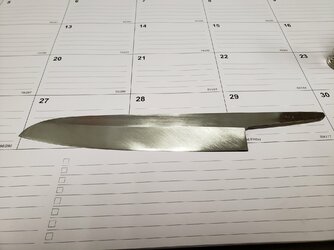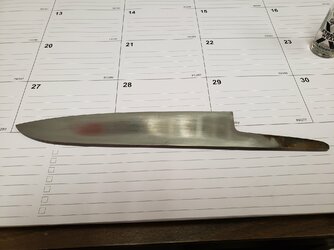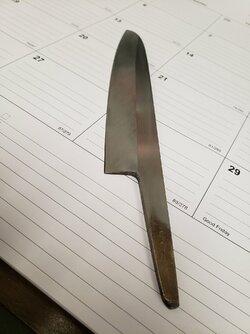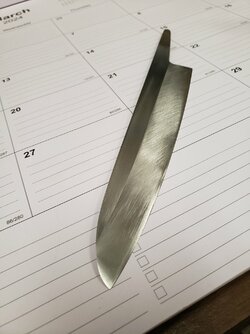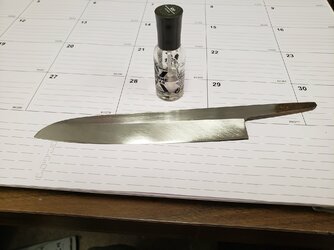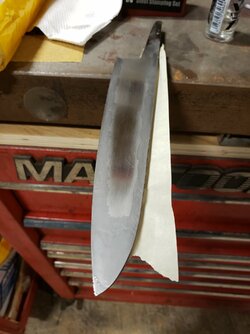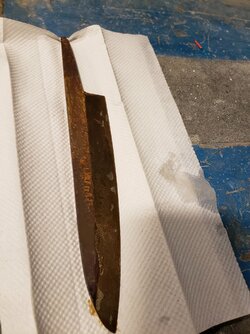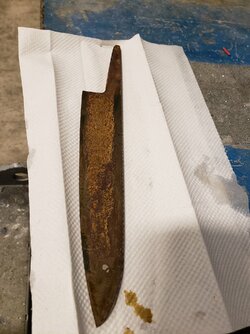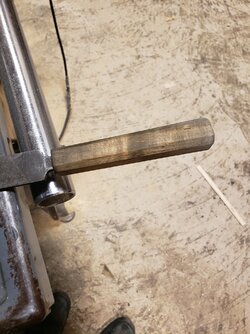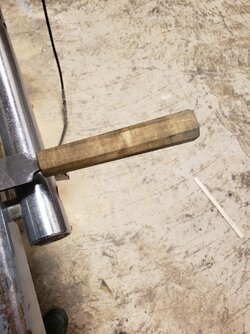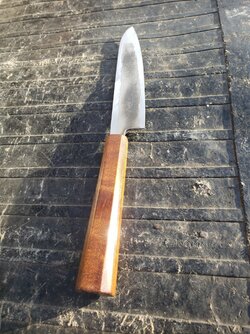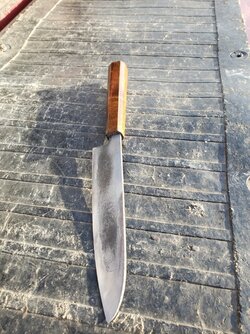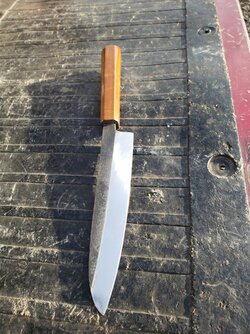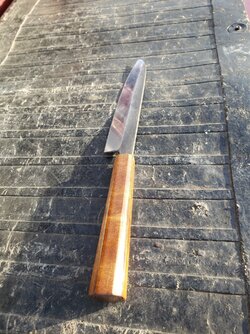This is a heavier Torrey that I restored this week.
Was working on 3 things I hadn’t tried before. 1) preserving the blade logo with nail polish during sanding 2) acrylic scale material that is supposed to resemble ivory, and I left the finish semi-gloss to look like more of a natural material and 3) made a lead wedge out of some black powder rifle balls.


Was working on 3 things I hadn’t tried before. 1) preserving the blade logo with nail polish during sanding 2) acrylic scale material that is supposed to resemble ivory, and I left the finish semi-gloss to look like more of a natural material and 3) made a lead wedge out of some black powder rifle balls.

